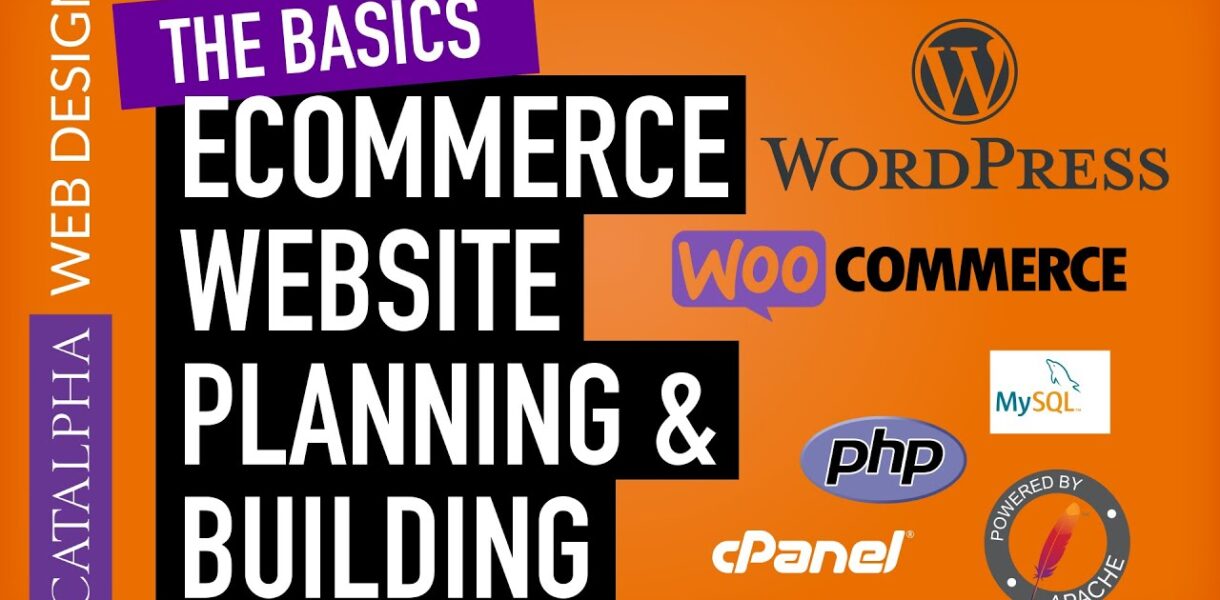Planning an ecommerce website requires careful consideration of several aspects, including product pages, Information architecture, navigation, security, and more. Here are some general tips. In order to get the most from your ecommerce website, follow these steps. You’ll soon see the benefits and drawbacks of each aspect, which can help you make better decisions. Listed below are several tips on how to plan an ecommerce website.
Information architecture
A good information architecture is invisible to the end-user; a bad one, by contrast, is highly visible and unpleasant to navigate. However, a good IA allows the user to conduct their business smoothly. Users can identify a bad website by its content structure. In general, users tend to remember bad experiences more than the good ones. Moreover, a good IA should be flexible enough to change as the site grows.
To implement a good information architecture, a categorized product hierarchy must be planned. Besides being intuitive, primary navigation labels must also have appropriate search volumes and be short enough to support menu-based navigation. It is therefore not advisable to plan the hierarchy solely on keywords. Instead, the information architecture should support and complement keyword research. Some common questions regarding keywords are: How to handle misspellings, synonyms, stemming, and other variations of keywords?
Identifying the appropriate navigation labels is another crucial part of ecommerce architecture. Information architects often forget to associate keyword research with navigation because they think that navigation should serve their users. When creating navigation labels, they should consider input from search engines such as Google and Yahoo. Likewise, navigation should be easy to navigate and should be optimized for SEO. Hence, information architecture is important for every online business, and should be properly planned to boost sales.
Customers prefer a smooth and user-friendly experience. A site that offers seamless navigation and an overall smooth experience is better for customer satisfaction. Proper ecommerce architecture is the key to success. It makes the experience seamless for the user and attracts more customers. The advantages of an efficient information architecture are numerous, and the benefits are endless. The webinar covers seven steps to choose the right architecture for an ecommerce website.
Product pages
When building an ecommerce website, product pages can make or break your business. According to Nielsen Norman Group, the most successful product descriptions are short, scannable, and objective. When done correctly, these types of content can increase usability and bounce rate by 124%. When creating product descriptions, keep in mind that shoppers want to know as much as possible about a product. If you want to be one of the most successful ecommerce websites, consider using these techniques.
Whether you’re selling toys or clothing, product pages play an important role in the buying process. Their success directly affects your profitability. Alex O’Byrne, co-founder of We Make Websites, and Chloe Thomas, editor of eCommerce MasterPlan, have put together a guide to help you plan your product pages. Here are some of the most essential elements to plan product pages.
When creating a product page, remember that a high-quality image can make or break a sale. It can be hard to sell something that doesn’t look good on your page, but a well-crafted product page can increase sales. The key is to plan it well. Using high-quality images can enhance your customer experience and make your website a pleasure to shop on.
While planning your product page, make sure that you include a buy button. The buy button should be the most prominent element on the page, near the top, and beneath the product title. Remember to mention any key selling points of your product, including free shipping, two-year warranties, and fast delivery. Also, a clear image of the shipping cost can encourage customers to buy the item. If possible, mention a live chat window or a FAQ to address a customer’s questions.
Navigation
How to plan navigation on an ecommerce site can help you increase conversion rates. Navigation can be complicated for ecommerce sites with hundreds of thousands of products. You can improve the usability of your website by grouping products by categories. In addition, faceted search can help shoppers filter their options based on product attributes and features. For example, the online shoe store Rollie Nation uses faceted search to filter its products by style, price, and size.
Navigation is one of the most important aspects of a website. Although designing navigation is easy, organizing it can be a bit more difficult. Here are some tips for a successful navigation:
Consider your website’s target audience when planning your navigation. Think about what your audience wants to know and what makes it easier to find it. The conversion assist report will help you determine which pages your visitors are most interested in. Look for pages that have high conversion rates, such as product/service pages, pricing, case studies, and more. After all, they want to buy, right? If you can make their shopping experience easier, they’ll buy from you.
Card sorting is a simple technique that helps designers understand what website visitors want. Even if you’re not an expert in UX, it can give you a good idea of how your site visitors browse. Simply put, if your customers know what they want, they’ll go to the search bar first. When designing your website’s navigation, you should consider how users prefer to access different content.
Security
When planning to start an ecommerce website, there are many security precautions that you should take to protect your site. First and foremost, you should choose a strong password that is at least eight characters long. This password must contain upper and lower case letters, numbers, and symbols. It should never be shared. You should also create unique login credentials for each website user. Never use the same password across multiple websites. And, of course, you should never share any personal information publicly. Additionally, you should make sure that all connected devices are cyber-secured. Having firewalls, antivirus software, and appropriate cyber security software is recommended for both connected devices and networked computers.
Another great way to keep your eCommerce site secure is to use third-party payment processing companies. These companies can set up a secure payment tunnel, which protects your customer’s information. Ensure that these companies use strong encryption to prevent hackers from stealing credit card information. Passwords are often the weakest link in ecommerce security, so you should use strong, unique passwords. Discard any default passwords for your website’s accounts, as well.
SSL certificates protect personal information and other data transmitted between a website and a buyer. SSL certificates are mandatory for all eCommerce websites under the PCI Data Security Standard, which guarantees businesses protect consumers from fraud. An SSL certificate also makes it easier to switch from HTTP to HTTPS, signaling to visitors that your site is secure. You should also consider using multi-factor authentication (2FA), or 2SV, for additional security. This means a user must enter additional information to prove their identity.
Choosing an e-commerce platform
When planning an ecommerce website, it’s crucial to choose an e-commerce platform that meets your business needs and goals. There are many benefits to choosing a platform that is purpose-built for ecommerce. Here are a few things to look for. One of the most important aspects of an ecommerce platform is its ease of use. It should have a user-friendly shopping experience, a seamless user interface, and the ability to manage orders efficiently.
Choosing an e-commerce platform can be tricky. There are many different options available, from hosted platforms to self-hosted, open-source platforms. Choosing one will depend on your budget, technical knowledge, and the type of ecommerce site you are planning to launch. Open-source platforms are the most flexible, but they do require a good deal of technical expertise. While these options are cheaper and more flexible, they can limit your ability to customize your website.
The next important factor to consider when selecting an ecommerce platform is your store size and complexity. Some platforms offer a lot of free support, while others offer dedicated support for more complex stores. While all of the ecommerce platforms are effective, consider how complex your store will be before choosing one. Bigger stores will need dedicated support, and smaller ones will not. It’s important to compare the different features and pricing of several ecommerce platforms so that you can make the best decision for your business.
Another factor to consider when choosing an ecommerce platform is its support. Make sure that the provider offers customer support, and that they have a good reputation for addressing technical issues. It’s essential to have access to 24/7 support, as problems can eat into your revenue and turn off potential customers. Without a good support team, your ecommerce website could be doomed to failure.



